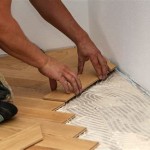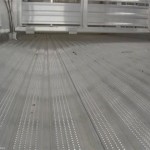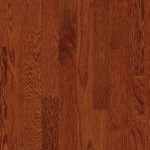Standard Size of Hardwood Flooring
Hardwood flooring is a timeless and elegant choice for homes, offering durability, warmth, and aesthetic appeal. When selecting hardwood flooring, understanding the standard sizes available is crucial for proper planning and installation. This article explores the standard dimensions of hardwood flooring, providing insights into the various options and their suitability for different applications.
Standard Hardwood Flooring Widths
The width of hardwood flooring plays a significant role in the overall visual effect of a room. Narrower planks create a more traditional and formal look, while wider planks offer a contemporary and spacious feel. Here are some common width options:
- 2.25 inches: This narrow width is often seen in traditional homes and creates a classic, refined look.
- 3.25 inches: A popular choice, this width offers versatility and works well in both traditional and modern settings.
- 4.25 inches: This wider width provides a more contemporary feel and can make a room appear larger.
- 5 inches and up: Wider planks, such as 5 inches, 6 inches, or even wider, are becoming increasingly popular for their modern aesthetic and ability to create a dramatic effect.
The choice of width depends on personal preference and the overall style of the home. Narrower planks are typically easier to install and may be more suitable for smaller rooms, while wider planks can create a more open and airy feel. It's essential to consider the size of the room and the existing décor when making a decision.
Standard Hardwood Flooring Lengths
Hardwood flooring planks are available in various lengths, ranging from short to long. The length of the planks influences the overall appearance and flow of the flooring. Here's a breakdown of common length options:
- Short Lengths (3-4 feet): Short planks are often seen in traditional styles and can create a more intimate feel. They are also a practical choice for rooms with complex layouts or tight spaces.
- Medium Lengths (5-7 feet): Medium-length planks offer a good balance between visual appeal and practicality. They work well in a variety of rooms and styles.
- Long Lengths (8 feet and up): Long planks create a sense of spaciousness and are popular in contemporary and minimalist settings. They can also help to enhance the flow of a room.
The choice of length depends on personal preference, the desired look, and the room's dimensions. Longer planks can minimize the number of seams and create a more seamless appearance, while shorter planks may be more suitable for rooms with tight spaces or complex layouts.
Standard Hardwood Flooring Thicknesses
The thickness of hardwood flooring determines its durability and the number of times it can be refinished. It's important to select the appropriate thickness based on the intended use and the expected wear and tear. Standard thicknesses include:
- 3/8 inch: This is the thinnest standard thickness, typically found in prefinished flooring and suitable for areas with low traffic.
- 1/2 inch: A common thickness, this offers good durability and can be refinished a few times.
- 3/4 inch: This thicker option provides maximum durability and allows for multiple refinishing cycles. It's suitable for high-traffic areas and areas prone to wear and tear.
Thicker hardwood flooring is more expensive but offers greater longevity. It's essential to consider the intended use of the flooring and the desired lifespan when choosing the thickness.
In addition to the standard sizes mentioned above, some manufacturers offer specialized sizes and unique dimensions to cater to specific design needs. These custom sizes allow for greater flexibility in achieving a desired visual effect and seamlessly integrating hardwood flooring into various spaces.
By understanding the standard sizes of hardwood flooring, homeowners can make informed decisions about their flooring choices. From the width and length of the planks to their thickness, careful consideration of these factors will ensure a durable, aesthetically pleasing, and long-lasting flooring installation.

Engineered Wood Flooring Size Guide Bvg

Flooring Grading And Sizes

Flooring 101 Choosing The Right Width For Your Wood Floor Carlisle Wide Plank Floors

What Size Does Wood Flooring Come In And Beyond Blog

4 Hardwood Plank Sizes And How To Choose The Right One

Choosing The Right Width For Your Hardwood Floors Real Wood

What Size Does Wood Flooring Come In And Beyond Blog

Measuring Guide For Wood Flooring Natural Floor Co

Flooring 101 Choosing The Right Width For Your Wood Floor Carlisle Wide Plank Floors

Types Of Hardwood Flooring Forbes Home
Related Posts








